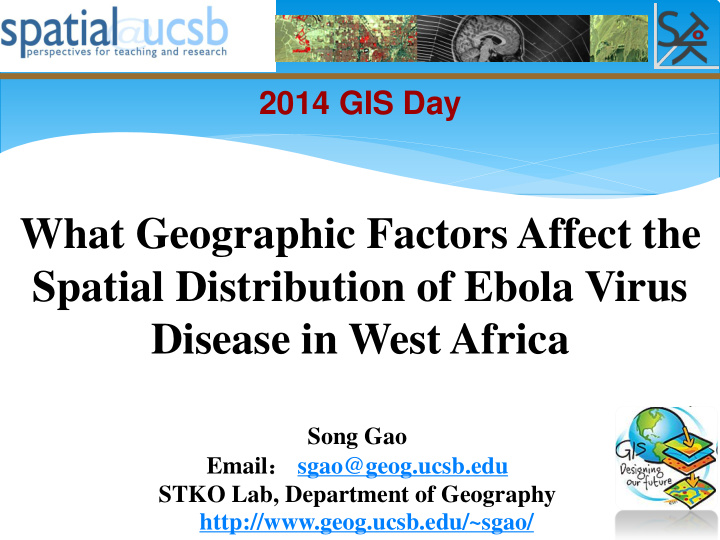



2014 GIS Day What Geographic Factors Affect the Spatial Distribution of Ebola Virus Disease in West Africa Song Gao Email : sgao@geog.ucsb.edu STKO Lab, Department of Geography http://www.geog.ucsb.edu/~sgao/
Ebola by the numbers: The size, spread and cost of an outbreak by Declan Butler & Lauren Morello
http://healthmap.org/ebola/#timeline
Correlation Coefficient: 0.722
Distance to Street Nodes and Edges
Distance to Street Nodes and Edges • 63% case locations within 10 km buffer zone • 81% case locations within 20 km buffer zone • 95% case locations within 30 km buffer zone of the highway junction nodes • 85% -> 10 km buffer zone of streets • 93% -> 20 km buffer zone of streets
Network Centrality Sociology Scientist, Freeman (1979) Degree Centrality Closeness Centrality Betweenness Centrality Geographers, Porta et al. (2006); Gao et al. (2013) Street Closeness Centrality Street Betweenness Centrality Street Straightness Centrality
Betweenness Centrality It measures how often a node is traversed by the geometry shortest paths connecting all pairs of nodes in the street network.
Spatial Human Structure Mobility • Population distribution • Facility Distribution • Digital Elevation Model Complex • Movements • Mobile Phone Call Networks • Interactions • Functional region • …… Information, Communication, Technology & Space, Place & Social
Recommend
More recommend